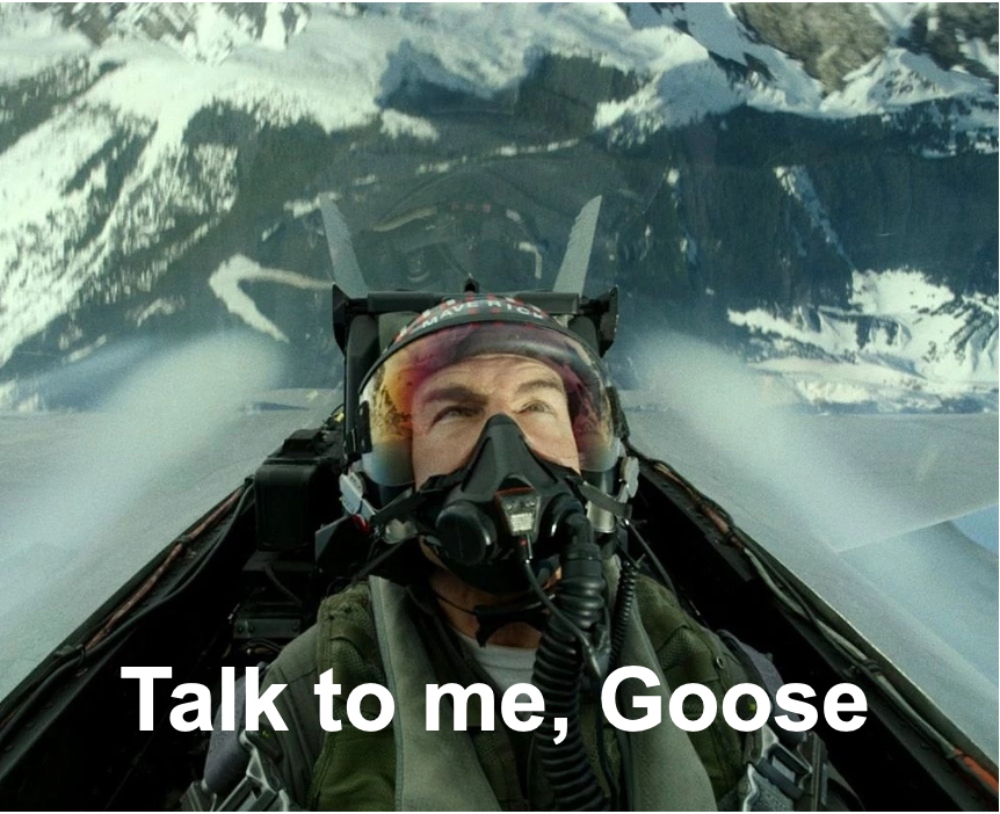To turn your next conversation, pitch, video or presentation into a story
Time to jump on the bandwagon. Until this month, I hadn’t seen the inside of a movie theatre since 2019. I’ve been there twice now, in the VIP seats, both times to see Top Gun: Maverick.
I loved it.
I’m not the only one.
Box office earnings reached $1.3 billion this week in the US and globally, showing no signs of slowing down.
Why?
It’s not the best movie ever.
I’m not sure it will get any critical acclaim, best director, maybe. Cinematography?
Best acting? Mmmm…don’t think so.
Why then?
Because we love a good story. And in this place and time – a war in Ukraine, pandemic fatigue, inflation hitting everyone’s grocery bill and just about everyone in the world hating someone for something they think or believe – we’re really hungry for a story that pulls us in, entertains us and ends well. Come on, Hollywood. Life is hard enough. It’s time for more happy endings.
What makes a good story? There’s a pile of research and ideas on the topic going back to Aristotle’s Poetics or even further. We can also break it down pretty simply. A good story needs:
- A character you can relate to
- An intention you can get behind – they’re pursuing something that matters to them and you can buy its importance
- An obstacle getting in their way – a struggle of sorts that pulls you into the drama
Top Gun
- Character – Maverick – the aging fighter pilot at the end of a career that left him with very little else in his life
- Intention – a mission – saving the world from the threat of an illegal uranium enrichment facility
- Obstacle – A near-impossible mission to complete and survive with the added challenge of flying with his best friend’s son
Add some great supporting characters, wicked action scenes and some feel good moments and you’ve got a hit, ladies and gentlemen.
As easy as it sounds, it’s also easy to miss the mark.
Netflix, defending against a diminishing subscriber base, swung for the fences with the rollout of its big budget feature, The Gray Man, launched in theatres and your living room this month.
I’m a big Netflix fan. As a marketer, I love how they turned the entertainment category on its head. As a consumer, I love the access to all the great stories at my fingertips – Ozark, The Last Dance and so many more.
I also love a good movie and I’m not a critic. I actually want to like things. Gray Man, starring Ryan Gosling and Chris Evans, promised some good drama and some good ass kickings and a couple hours well spent. You can imagine when we curled up on the sofa and broke out the microwave popcorn, we were all-in for a good time.
Here’s the recap: One prolonged action scene and big dose of who cares
On the surface, this looks like a decent story. Where did they go wrong? The movie was full of big fights and big bangs, but it totally failed to connect us to the character or why we should care about him or his mission. If we don’t connect, if we don’t relate and care, then we’re not pulled into the story. All the action sequences and special effects in the world can’t fix that.
I barely remember the elements of this movie or details behind the relationships or why the mission matters. It’s basically a couple of hours I can’t get back.
Okay, so what? Who cares?
I realize most of us aren’t movie makers and will never be scripting scenes for Tom, Ryan or Chris. But we do craft stories, every day. Whether you’re prepping for your next sales call or pitching your budget increases to your leadership team, you’re telling a story.
Consider building it with these elements in mind:
- A character you can relate to – maybe it’s a customer, their customer or your team
- An intention you can get behind – a problem they need to solve, unmet potential
- An obstacle getting in their way – time, money, competition, unpredictable operations, market swings, etc.
You tell stories everyday in your work life and, like many of us, you feel the need to trade the humans, the interest, the emotion and details for the facts, the figures, the bullet points and strategy statements in the interest of “business.”
Don’t do that. Remember, every great thing ever achieved started with a story – a story you told a human about something that would impact humans in one way or another. Make business personal. It already is.

